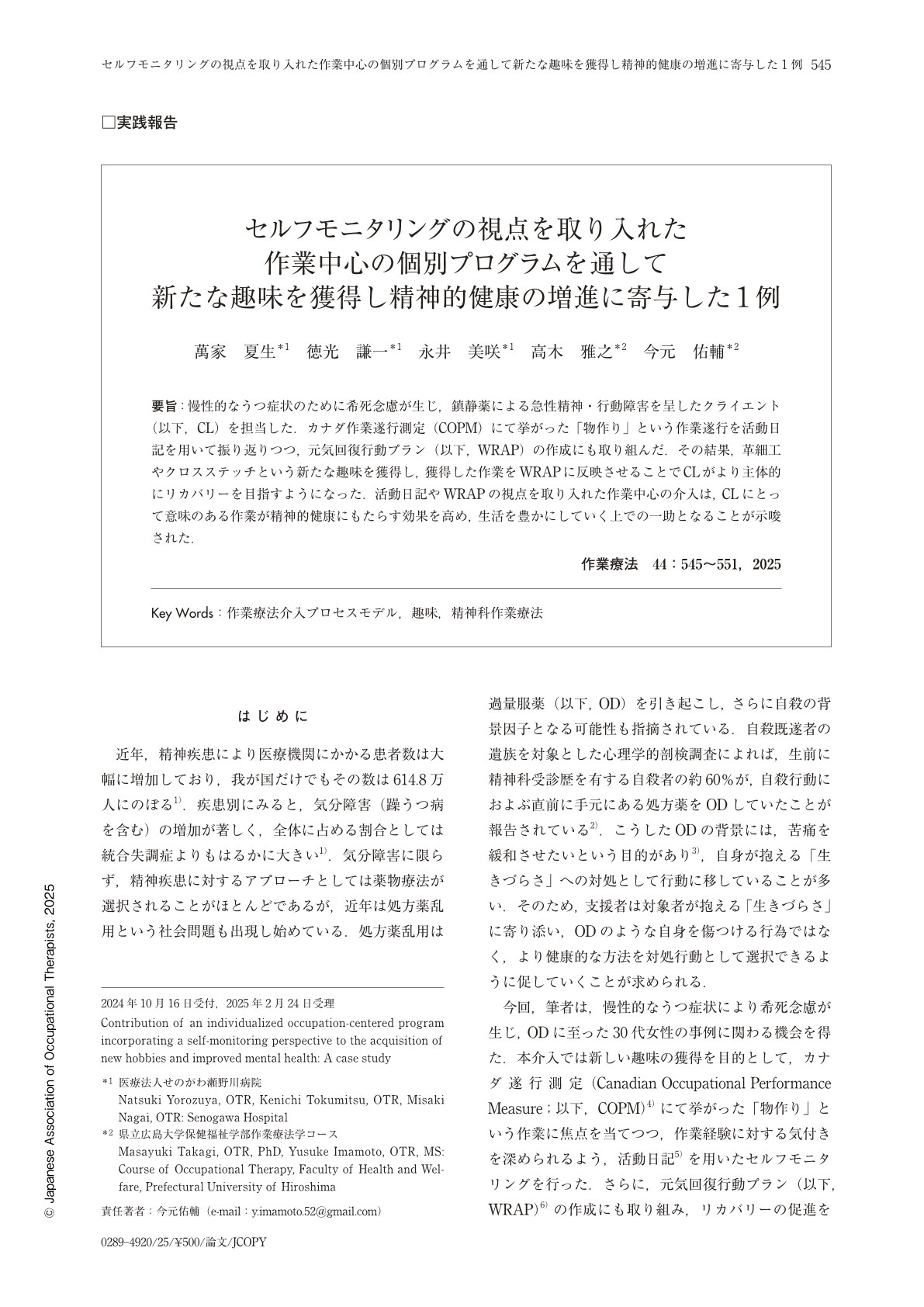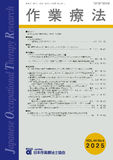Japanese
English
- 販売していません
- Abstract 文献概要
- 1ページ目 Look Inside
- 参考文献 Reference
要旨:慢性的なうつ症状のために希死念慮が生じ,鎮静薬による急性精神・行動障害を呈したクライエント(以下,CL)を担当した.カナダ作業遂行測定(COPM)にて挙がった「物作り」という作業遂行を活動日記を用いて振り返りつつ,元気回復行動プラン(以下,WRAP)の作成にも取り組んだ.その結果,革細工やクロスステッチという新たな趣味を獲得し,獲得した作業をWRAPに反映させることでCLがより主体的にリカバリーを目指すようになった.活動日記やWRAPの視点を取り入れた作業中心の介入は,CLにとって意味のある作業が精神的健康にもたらす効果を高め,生活を豊かにしていく上での一助となることが示唆された.
The client (hereafter referred to as “CL”) suffered from rarefied thoughts of death as a result of chronic depressive symptoms, and presented with acute psychiatric and behavioral disorders due to sedative medications. Occupational therapy focused on the task of “making things,” which was identified in the Canadian Occupational Performance Measure (COPM), and was reflected on using an Activity Diary. A Wellness Recovery Action Plan (WRAP) was also developed to facilitate recovery. As a result, CL acquired new hobbies such as leatherworking and cross-stitching, and by reflecting the acquired occupation in WRAP, CL became more proactive in her recovery efforts. This suggests that an occupation-centered intervention, incorporating the Activity Diary and the WRAP perspective, can enhance the effects of meaningful occupation on CL's mental health and help them to enrich their lives.

Copyright © 2025, Japanese Association of Occupational Therapists. All rights reserved.


